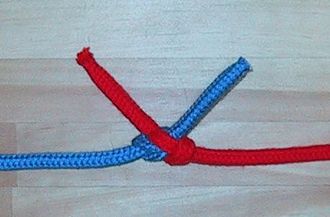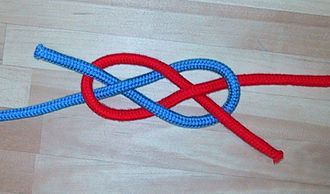(→Tying) |
(→Tying) |
||
| Line 18: | Line 18: | ||
See article/pictures. | See article/pictures. | ||
| − | Considered to be one of the most secure bends. Will | + | Considered to be one of the most secure bends. Will not jam (i.e. can be untied easily) even after carrying a significant load and/or getting wet. |
Unless the two free ends are lashed to the two standing parts, the knot will collapse into a different shape under load, which does not reduce its strength in any way. | Unless the two free ends are lashed to the two standing parts, the knot will collapse into a different shape under load, which does not reduce its strength in any way. | ||
[[Category:Knots]] | [[Category:Knots]] | ||
Revision as of 03:39, 3 March 2005
Canonical Name: Carrick Bend
Category: bend
Efficiency: Unknown %
Origin
Ancient. The name comes from Carrick Roads - a large natural anchorage by Falmouth in Cornwall, England. Carrick is also a local government district in Cornwall and the knot is the emblem of Carrick District Council.
The name is also said to have been derived from the Carrack, a medieval type of ship.
Uses
Securing two lines, particularly heavy ropes or decorative purposes.
Tying
See article/pictures.
Considered to be one of the most secure bends. Will not jam (i.e. can be untied easily) even after carrying a significant load and/or getting wet.
Unless the two free ends are lashed to the two standing parts, the knot will collapse into a different shape under load, which does not reduce its strength in any way.


